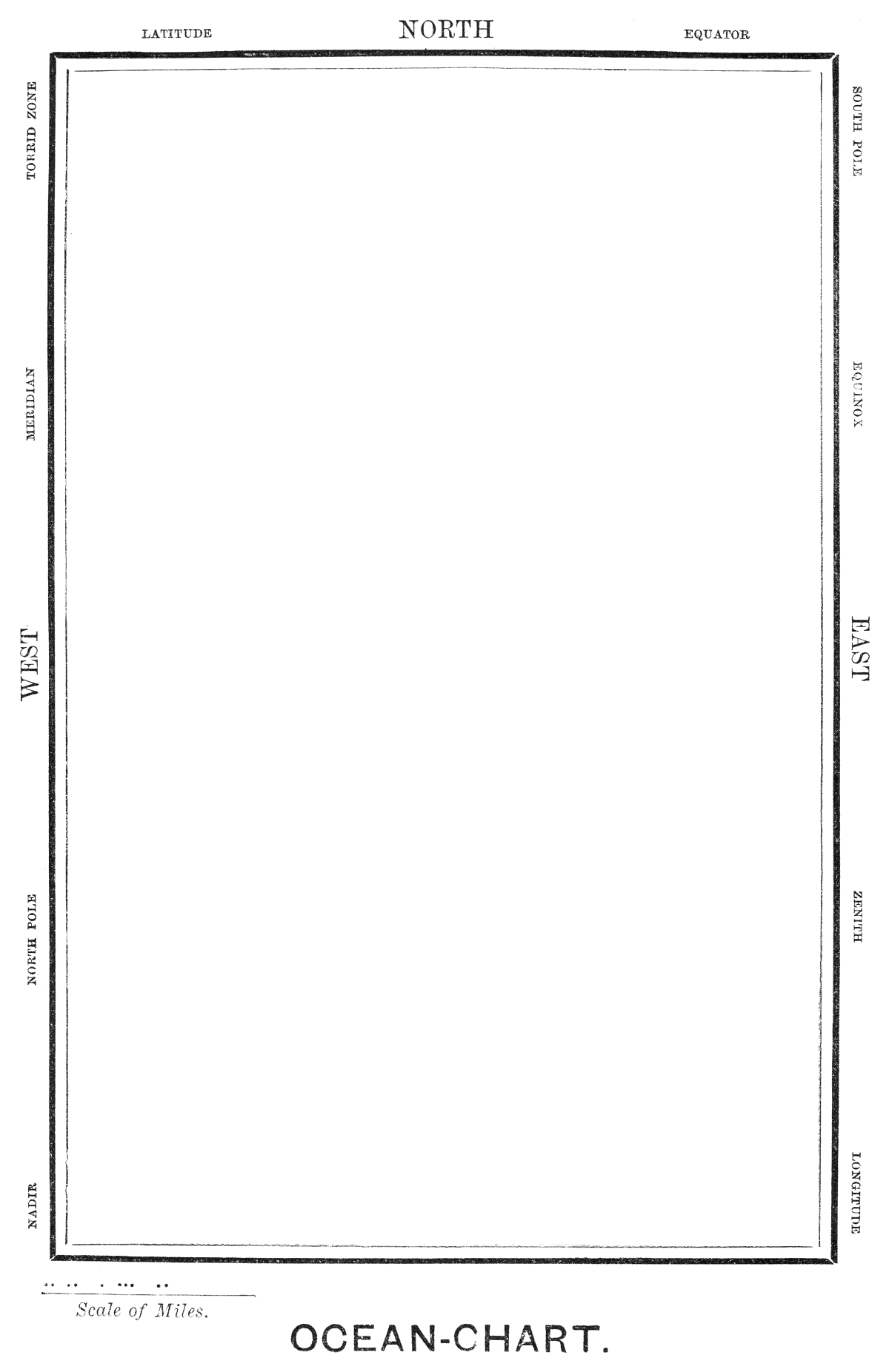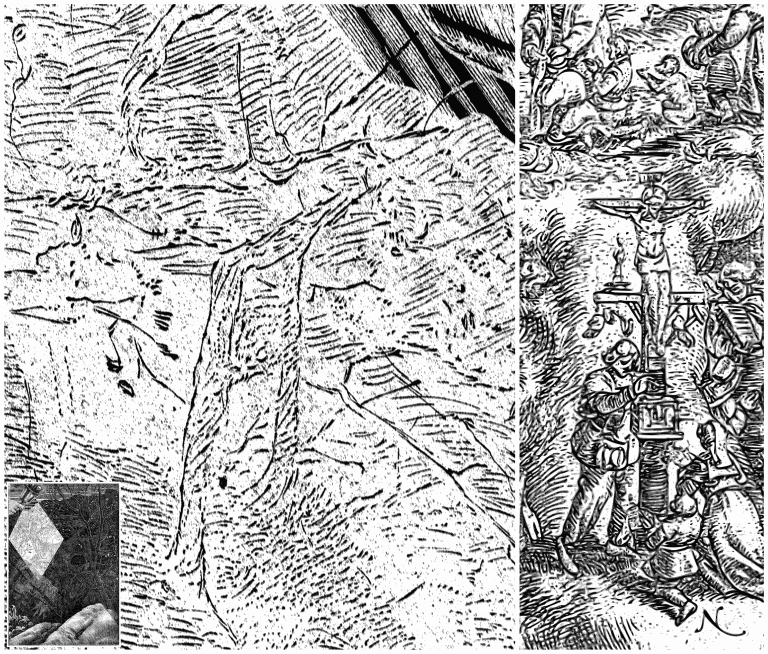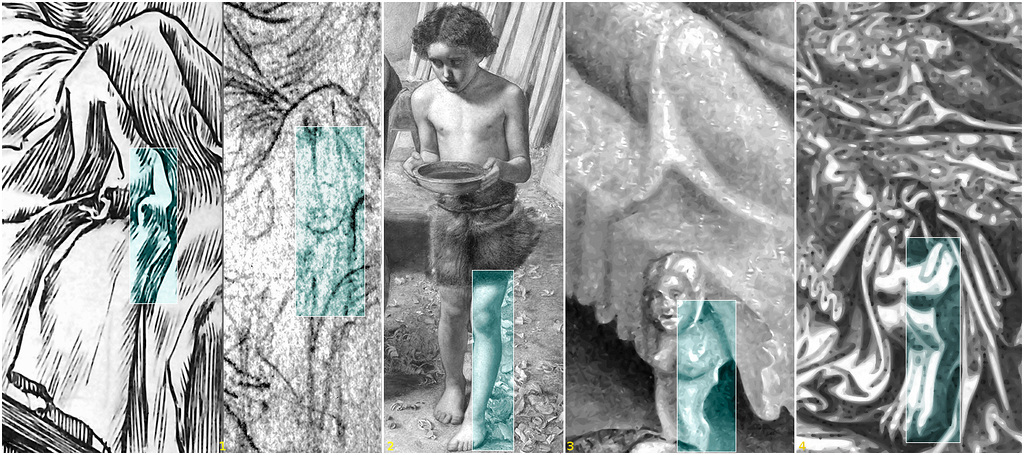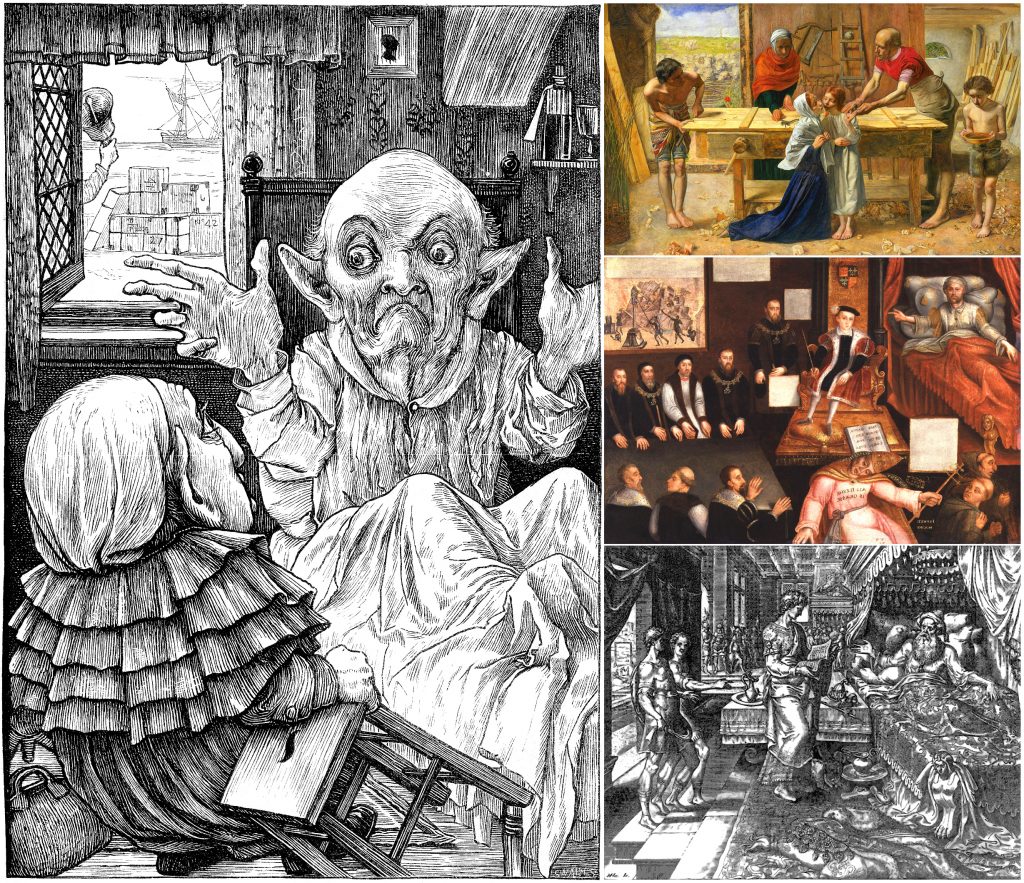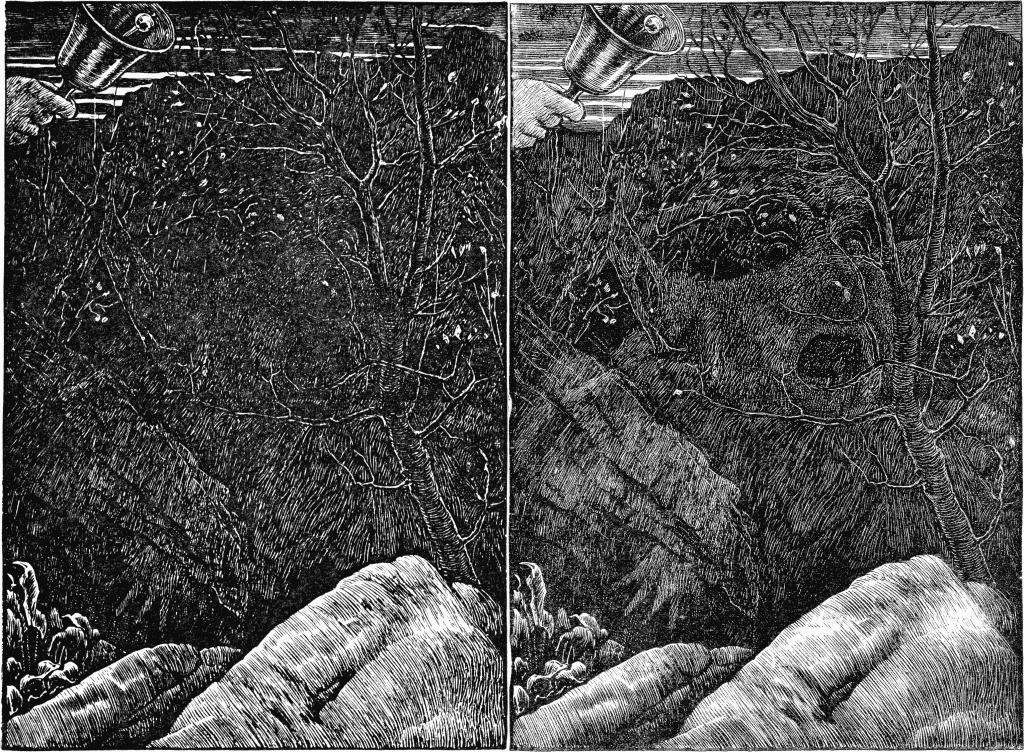
On the left side of this image comparison you see a scan (source: commons.wikimedia.org) of Henry Holiday’s illustration to the final chapter The Vanishing in Lewis Carroll’s The Hunting of the Snark. It already is a quite faithful reproduction of the original illustration.
The image on the right side has been generated from a scan of an original illustration from my own 1st edition of The Hunting of the Snark, where I grew the white areas a bit. (First I enlarged the image by 2:1. Then I applied GIMP → Filters → Generic → Delate. After that I scaled the image back to its previous size.)
I am not sure whether in the original printing from electrotypes the dark areas of the illustration might have grown wider than it was intended by Henry Holiday. It looks as if too much black ink had spilled into the white areas.
As for resolution, the print made by Ian Mortimer (for a limited edition of The Hunting of the Snark published by Macmillan in 1993) from Joseph Swain’s original woodblocks has a better quality than the illustration which you find in the mass printed books. But Mortimer’s print looks even darker.
In order to fix overprinting with the technology available to in the 19th century printers, one perhaps would have to redo the electrotypes and then try to erode the black areas using etching. Or just less ink would just do the job. But I don’t know too much about electrotyping (and printing in general), so I am just guessing here. Whatsoever, since many Snark editions hade been sold already, the dark Snark with the well hidden face of the Baker is the standard today.
Further reading: Lewis Carroll’s cat-astrophe, and other literary kittens by Mark Brown, The Guardian, 2018-11-22. (A tweet by Susan J. Cheadle drew my attention to that article. “Carroll’s Trump-like anger at the printing of his book Through the Looking-Glass and what Alice Found There is revealed in a new exhibition opening at the British Library which explores and celebrates cats in literature.” (As for cats, you might like my blog post “Kitty”.))
2021-06-05: Today I learned that on 1876-03-02, Macmillan reported to Carroll that the block for the illustration for the 8th fit was not printing clearly. Source: p.17 in The Snarkologist, The Institute of Snarkology, Vol. 1, Fit 1, May 2021, referring to p.124 Footnote 1 in Morton Cohen and Anita Gandolfo’s Lewis Carroll and the House of Macmillan, 1987. So I suggest, that from now on Snark publishers use a corrected version of the illustration for the 8th fit.
2018-06-17, updated: 2022-11-25
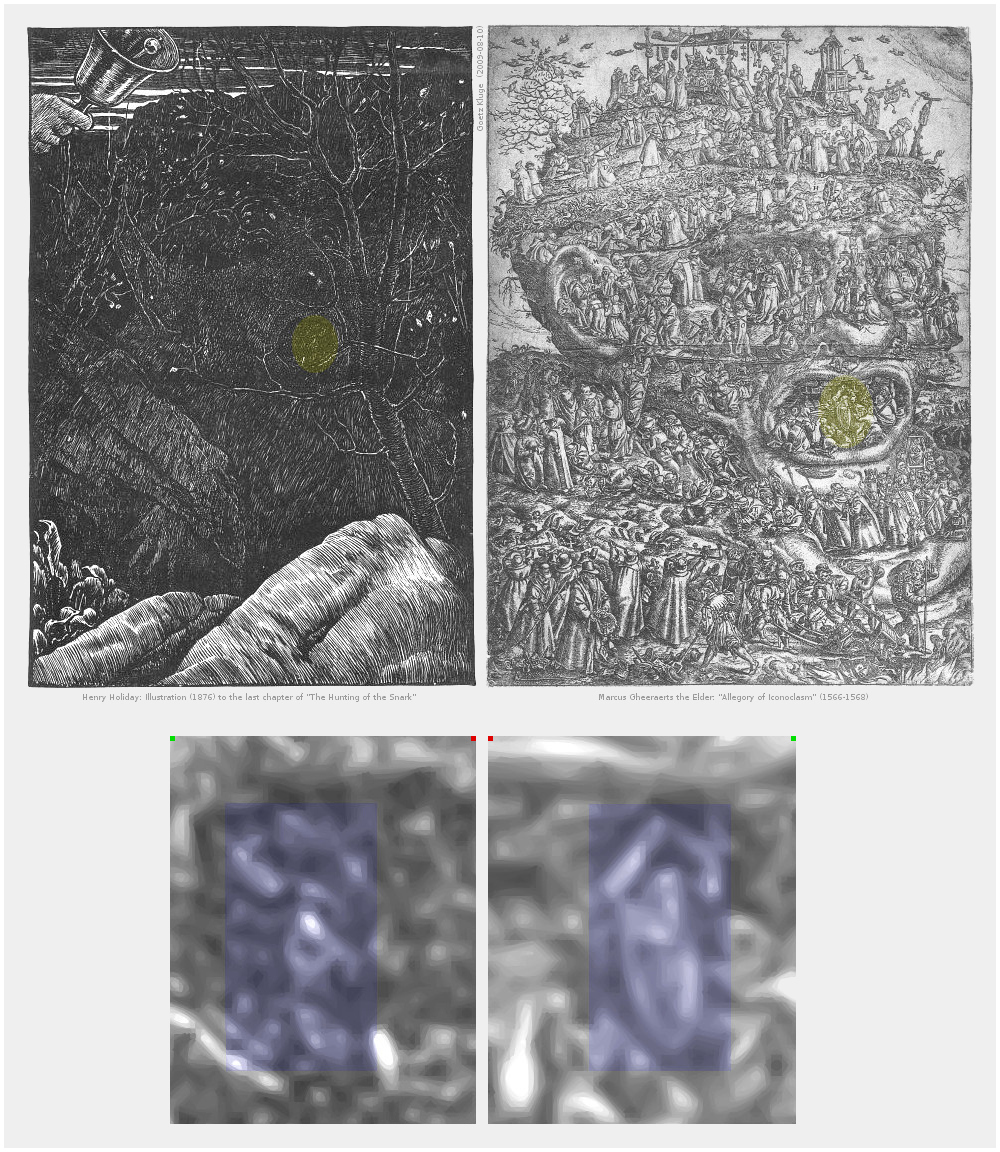

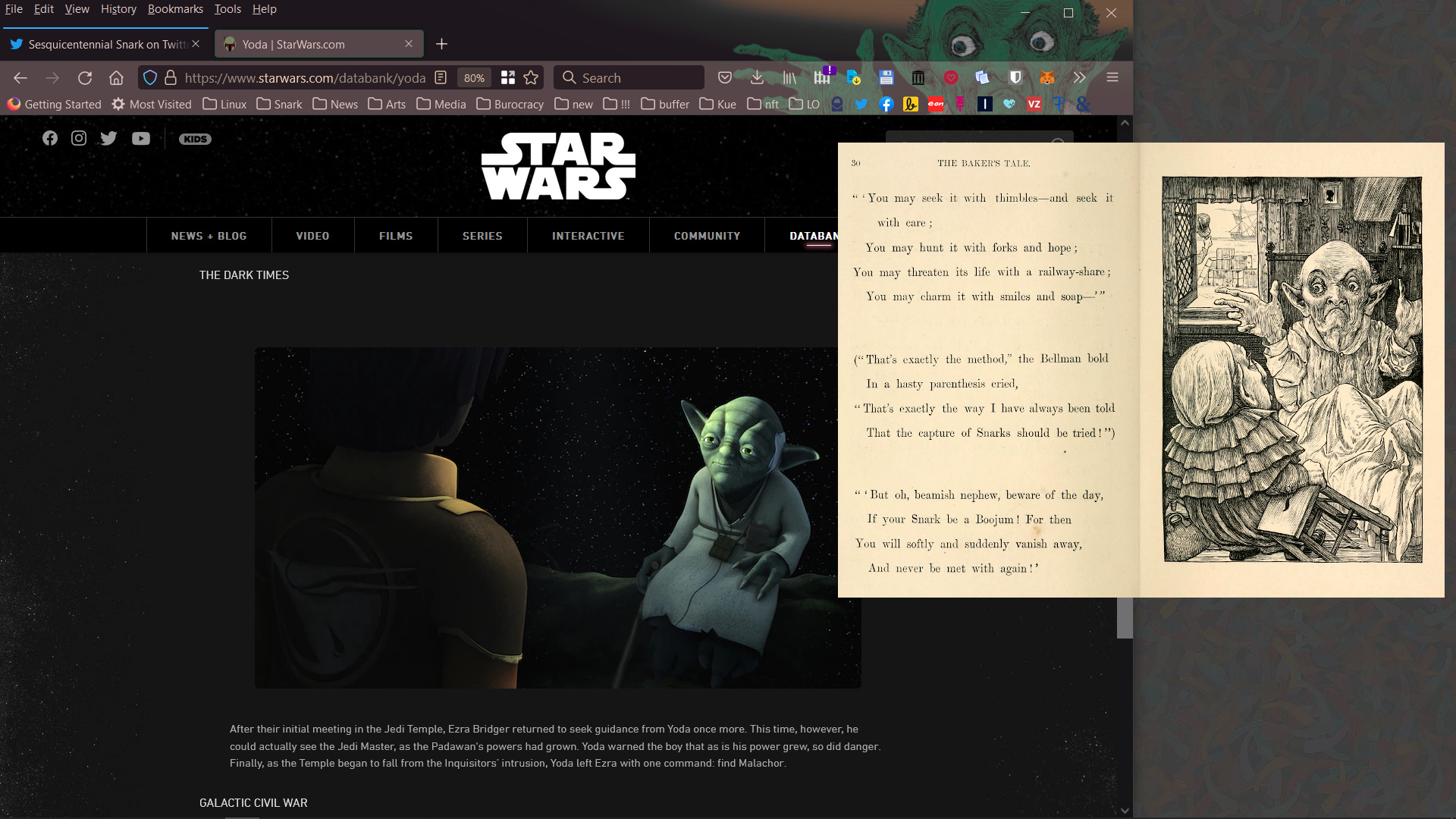
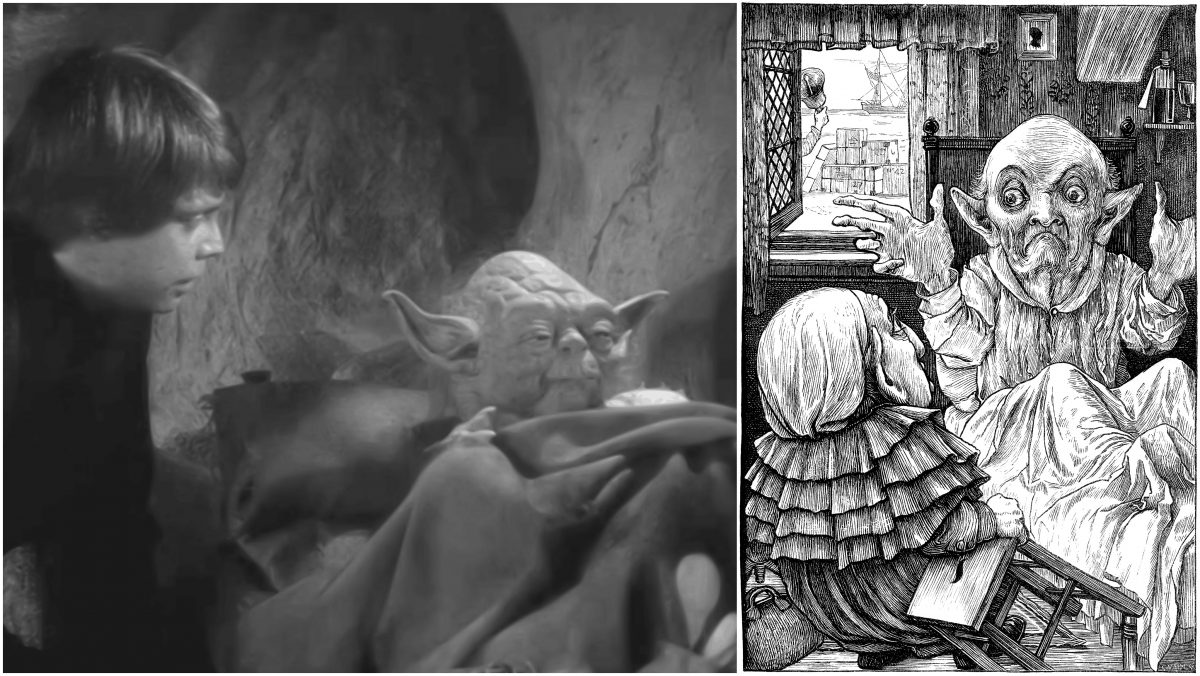
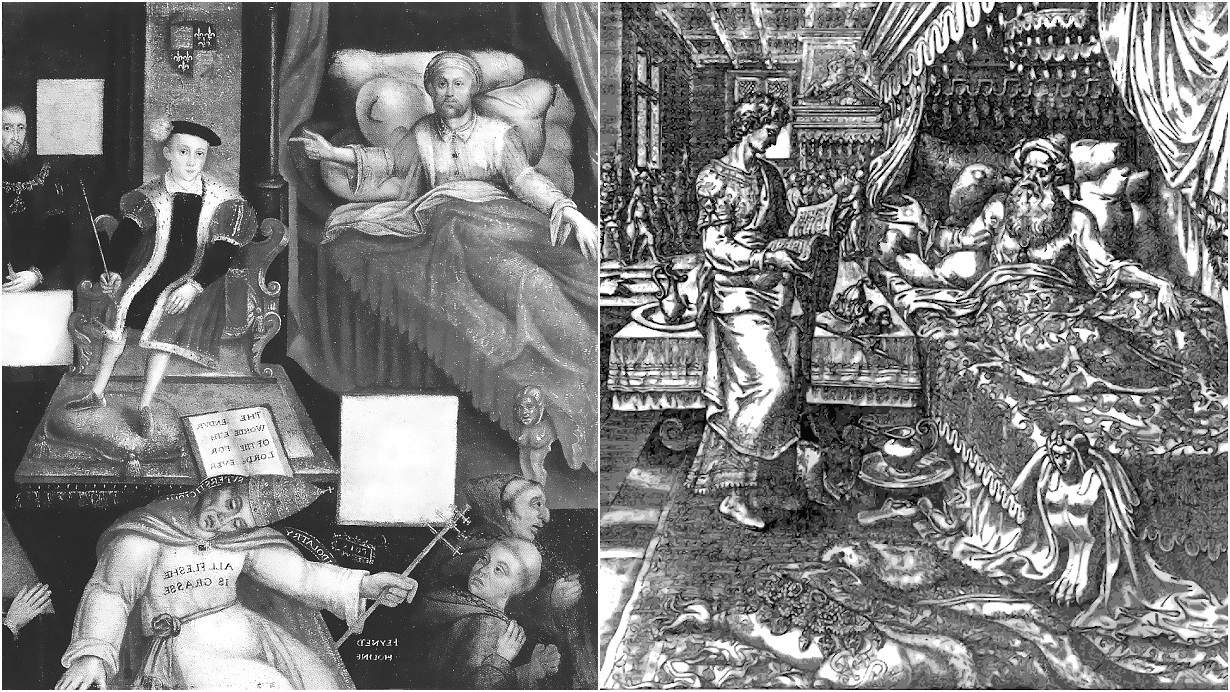
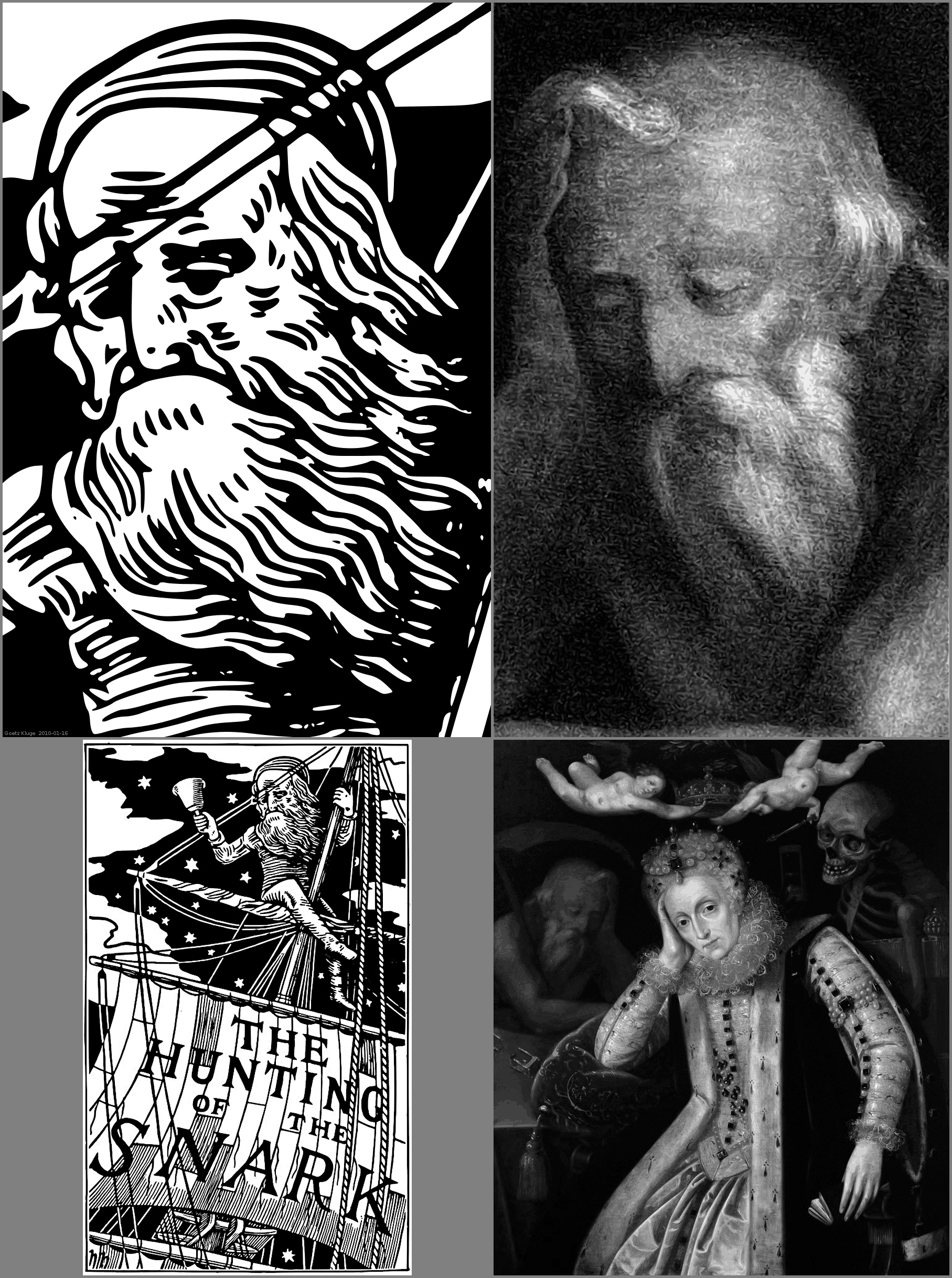
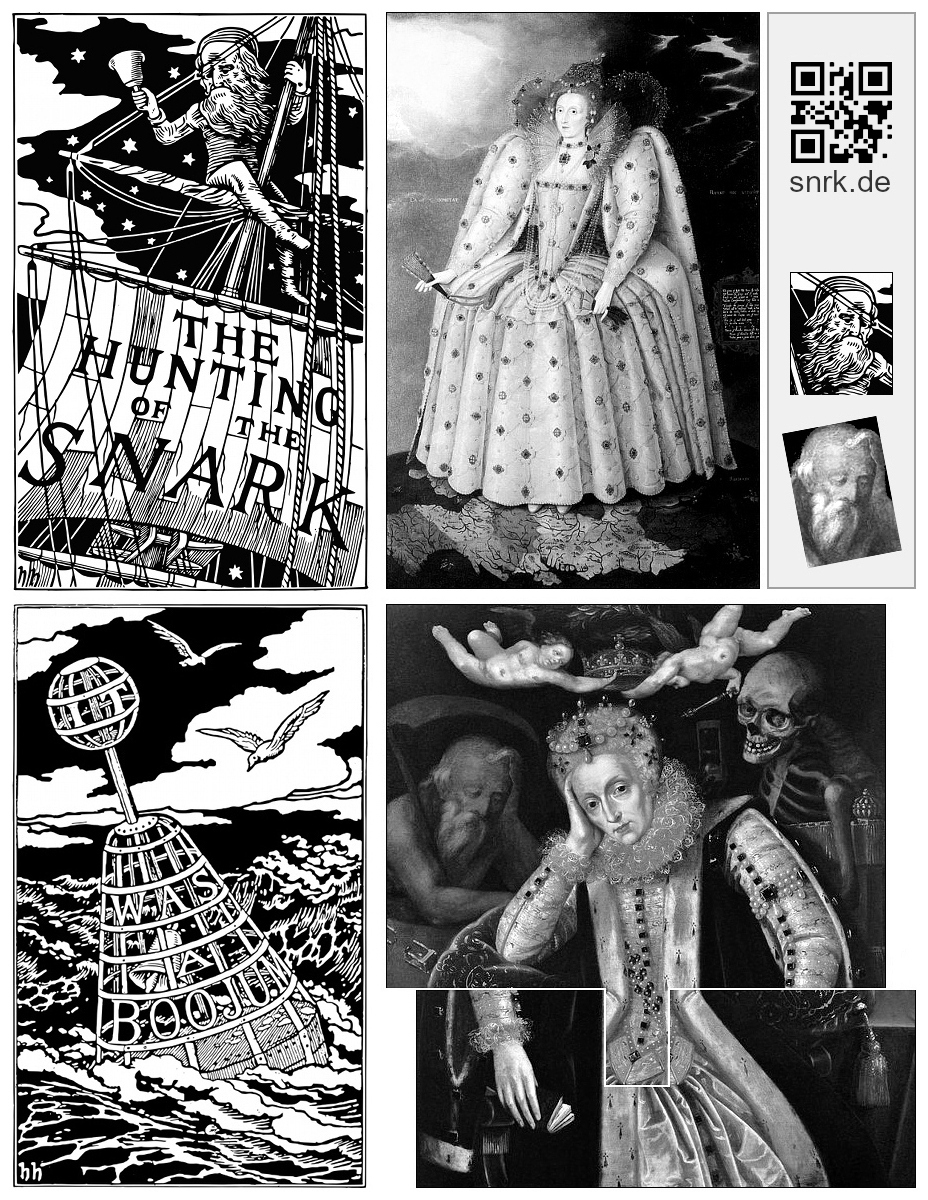

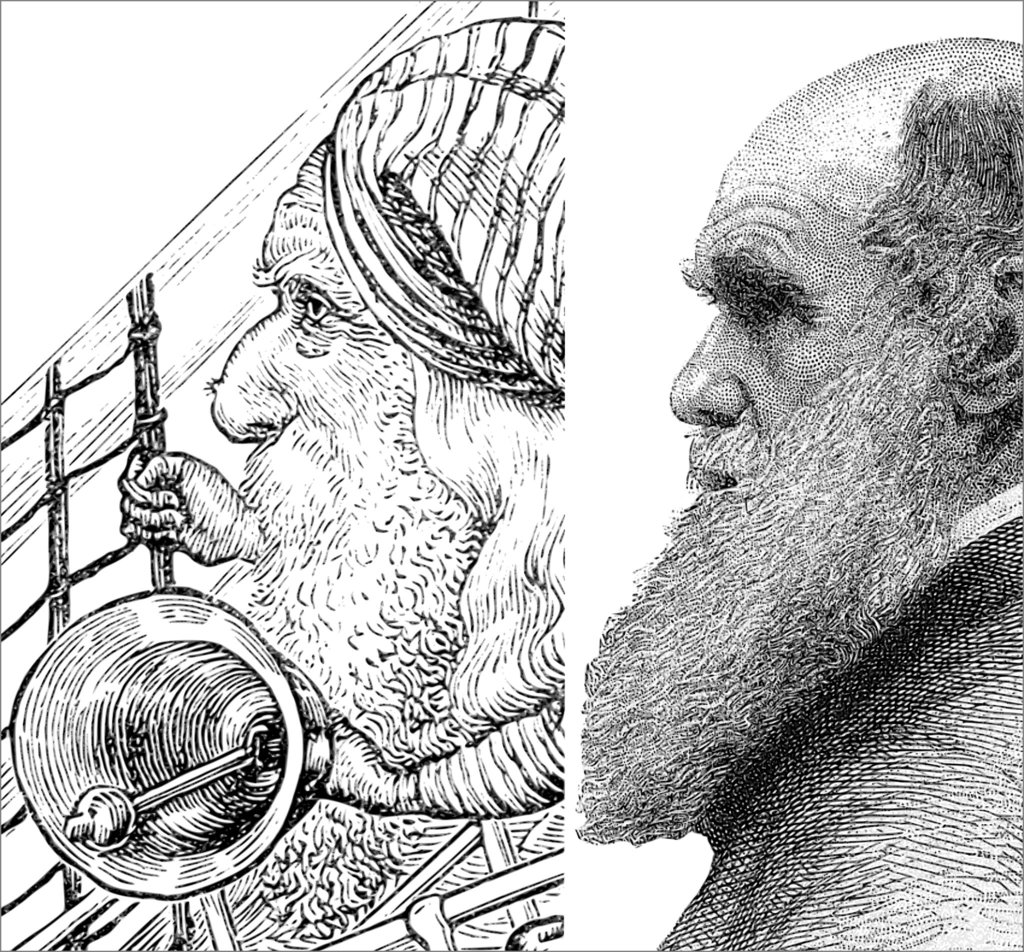
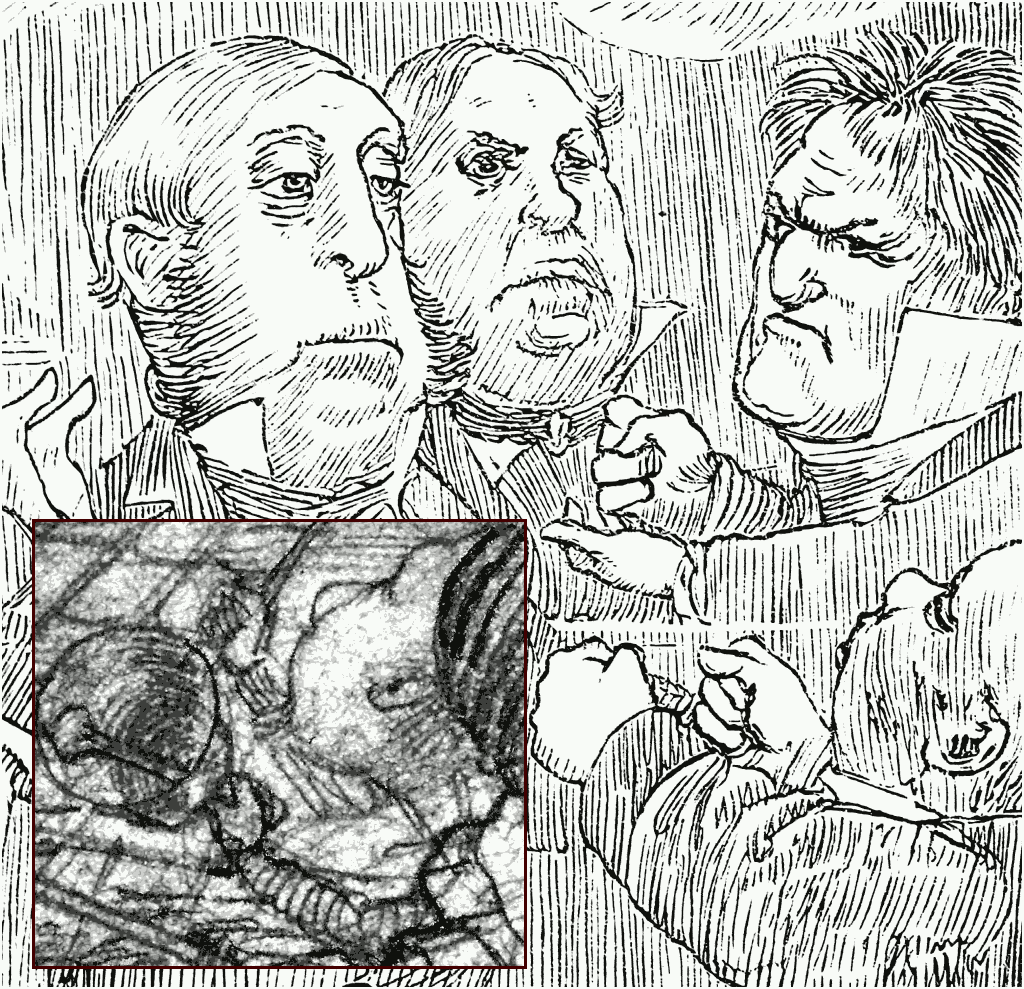
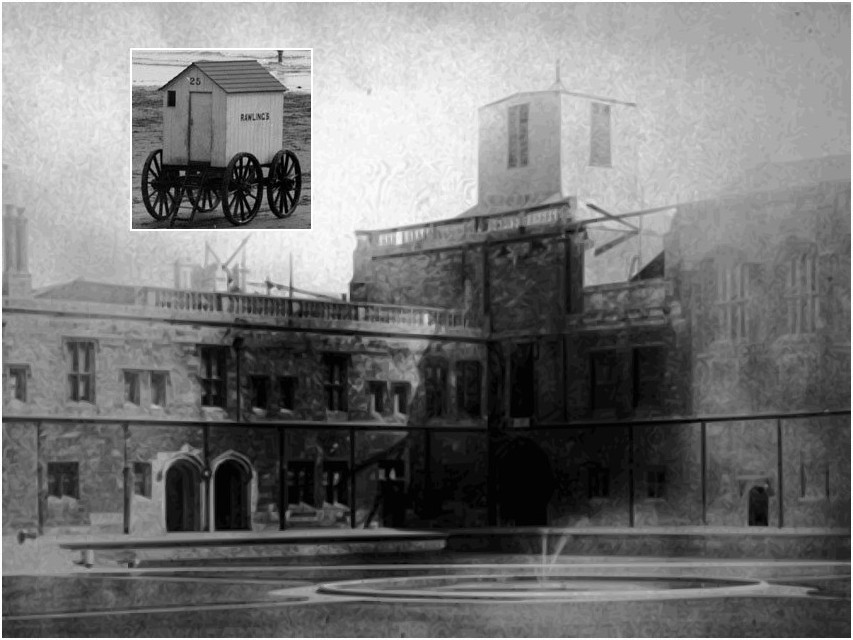
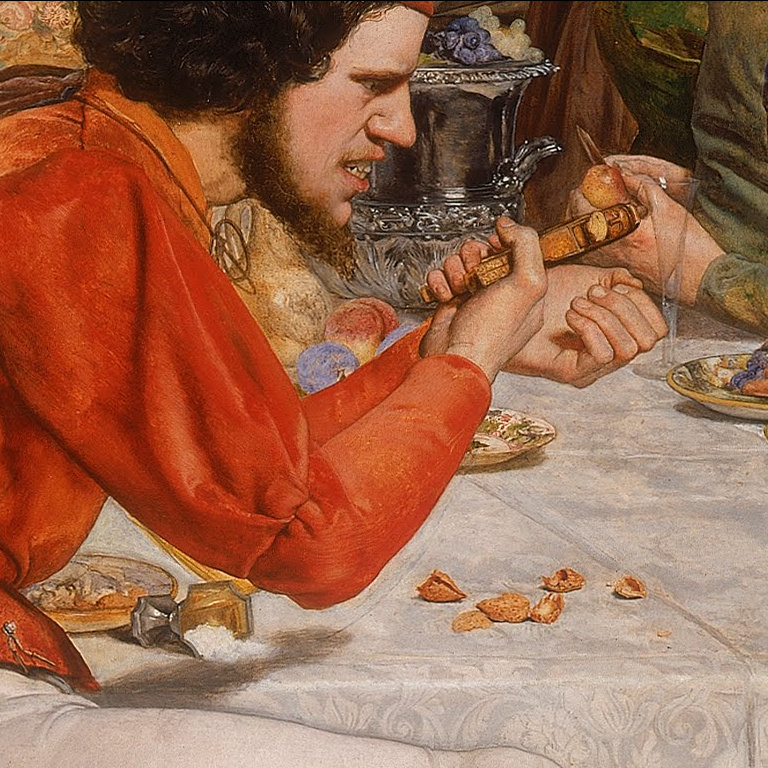
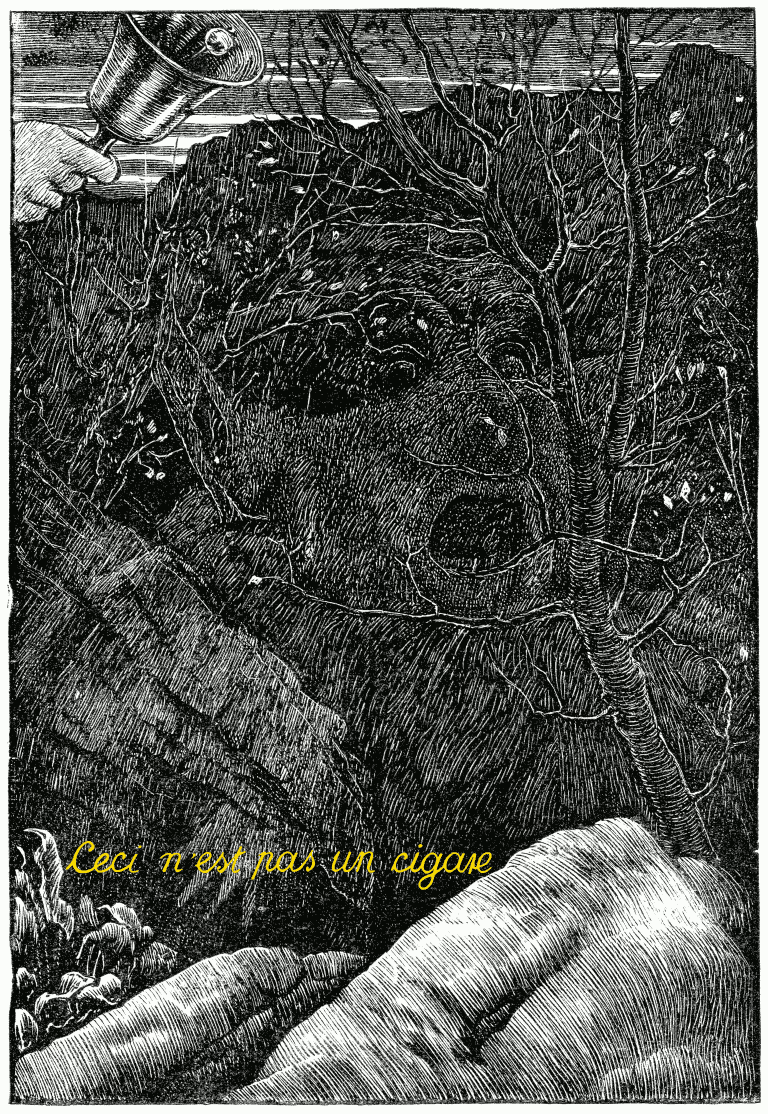
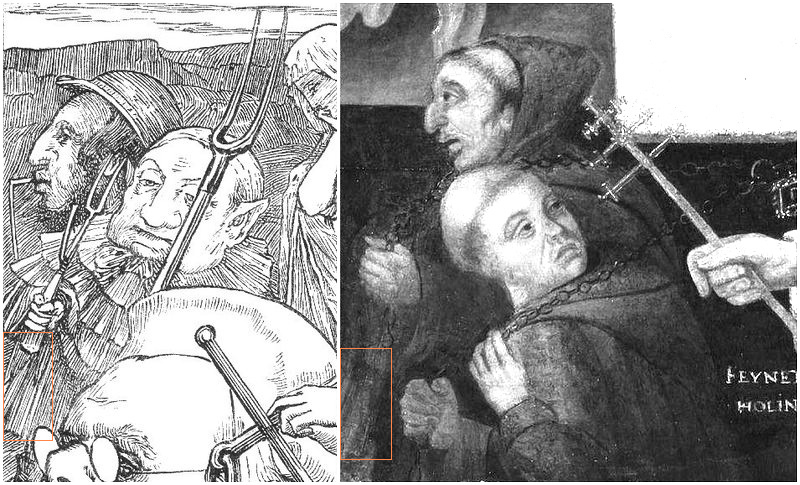
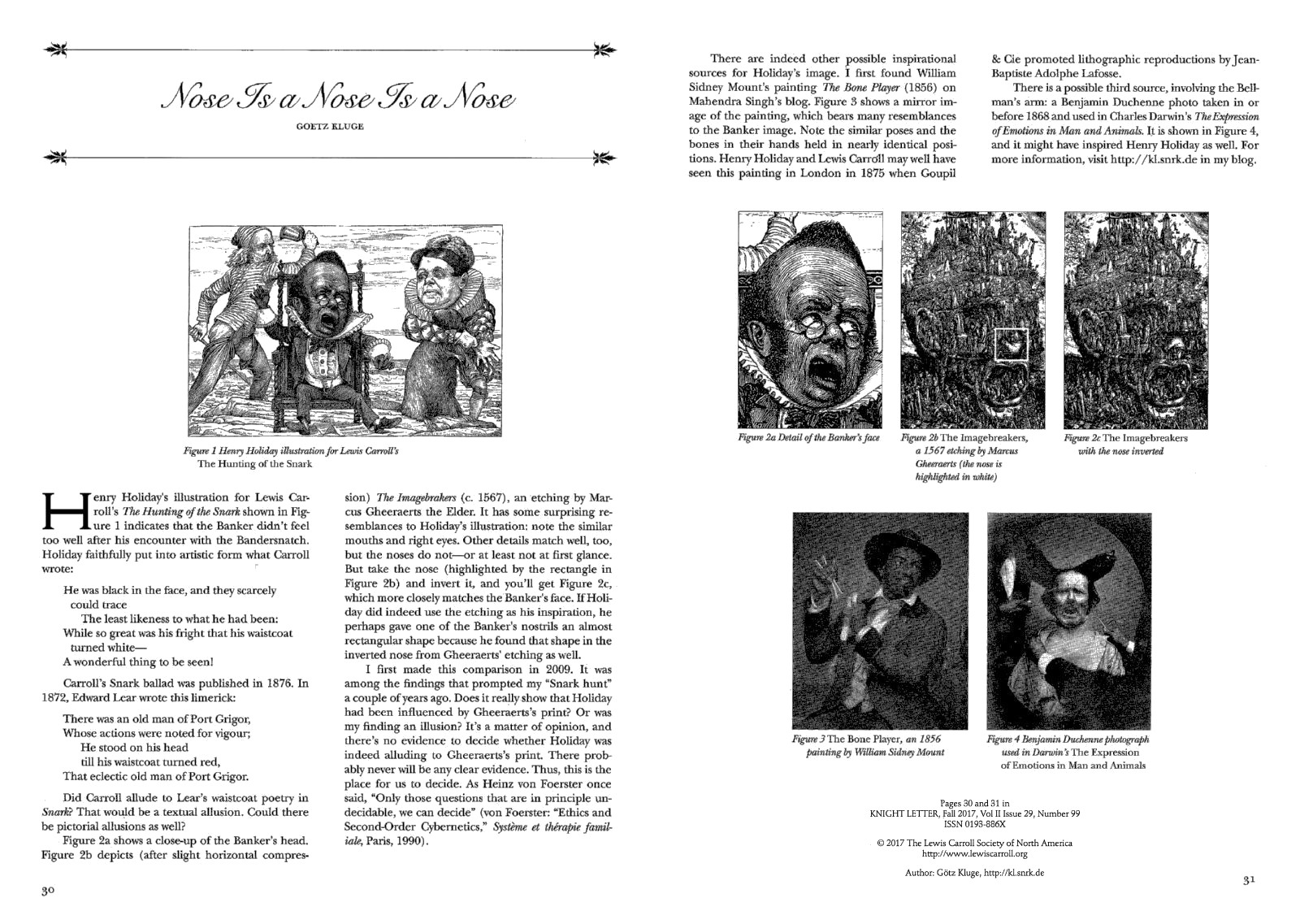
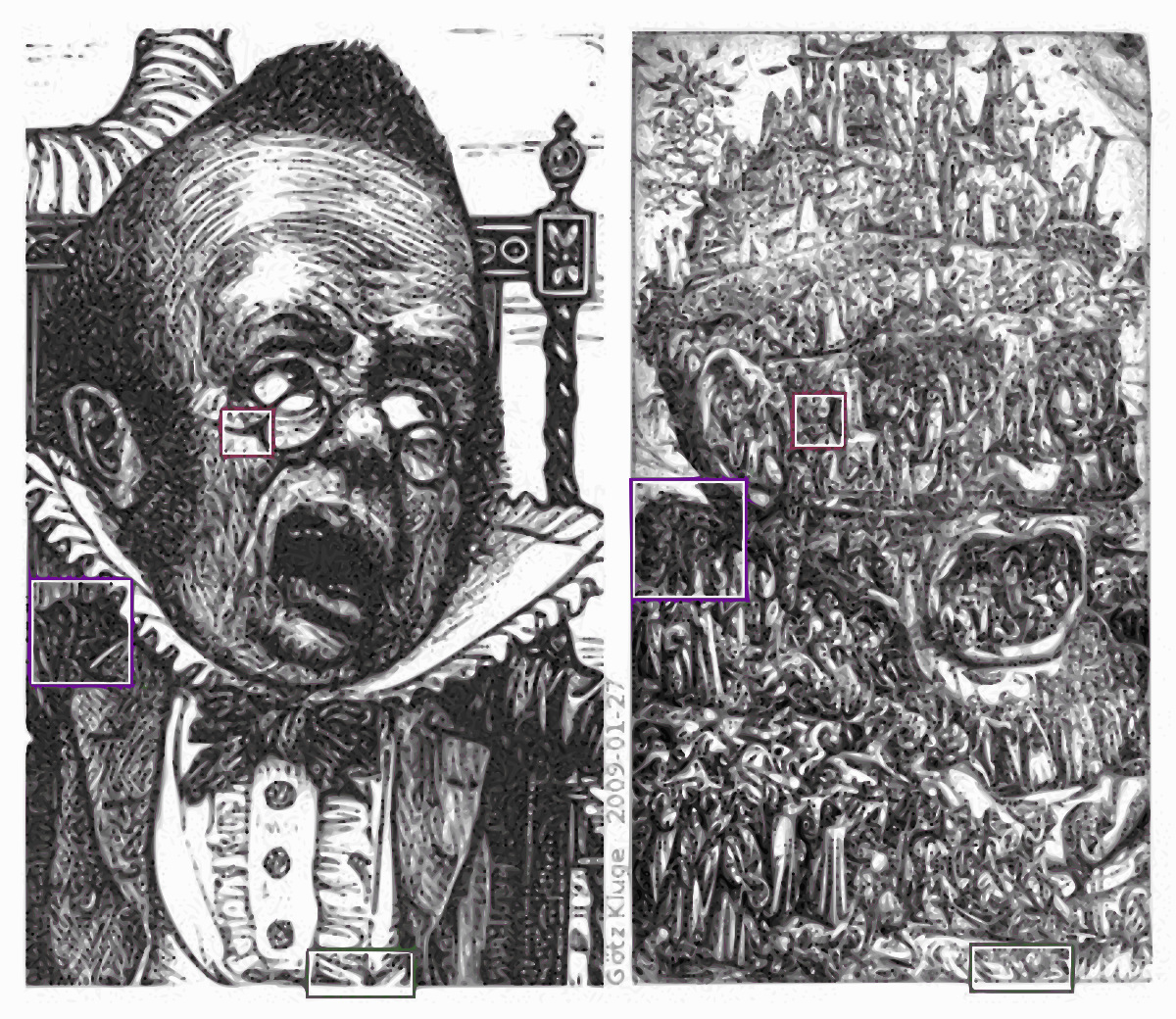
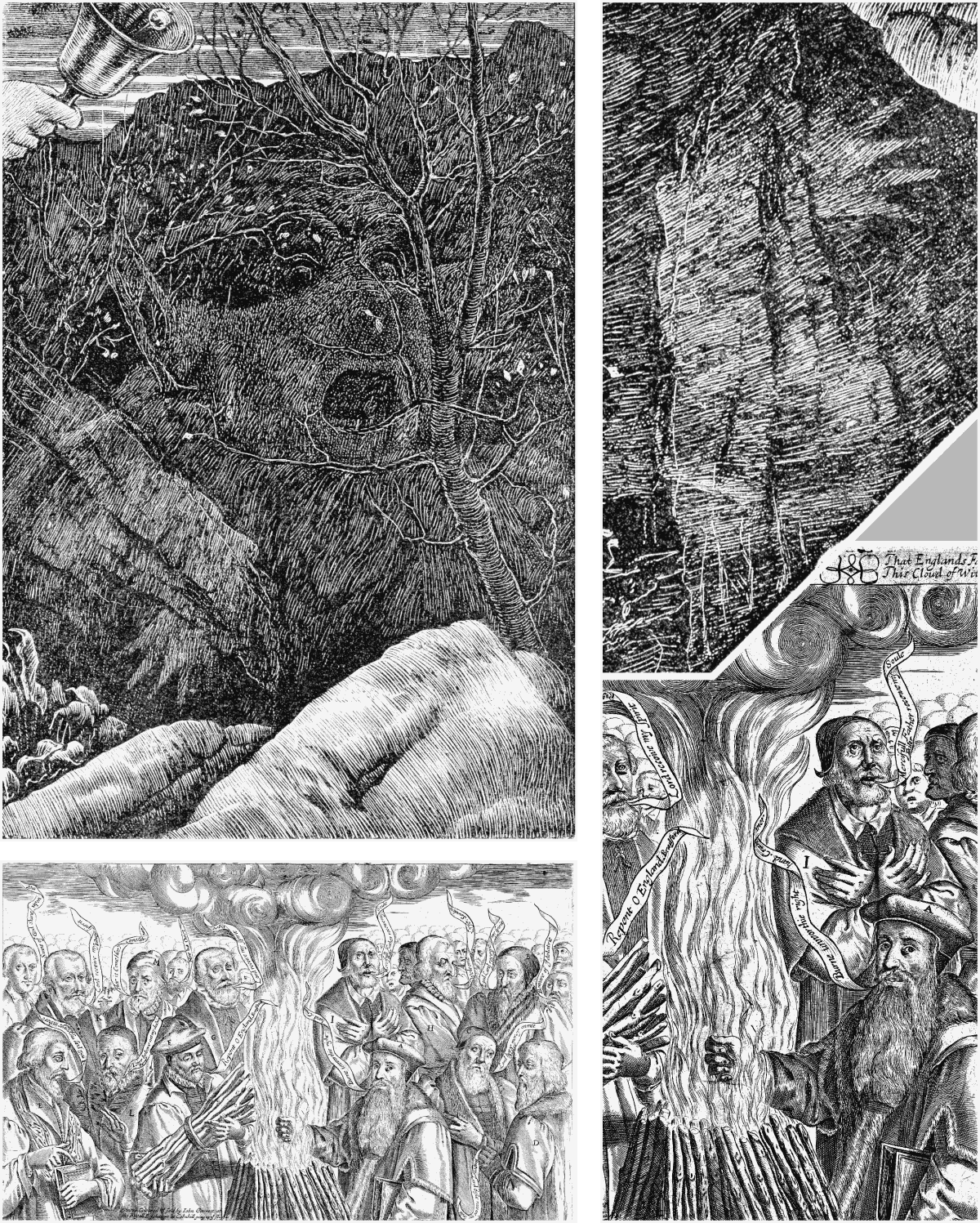
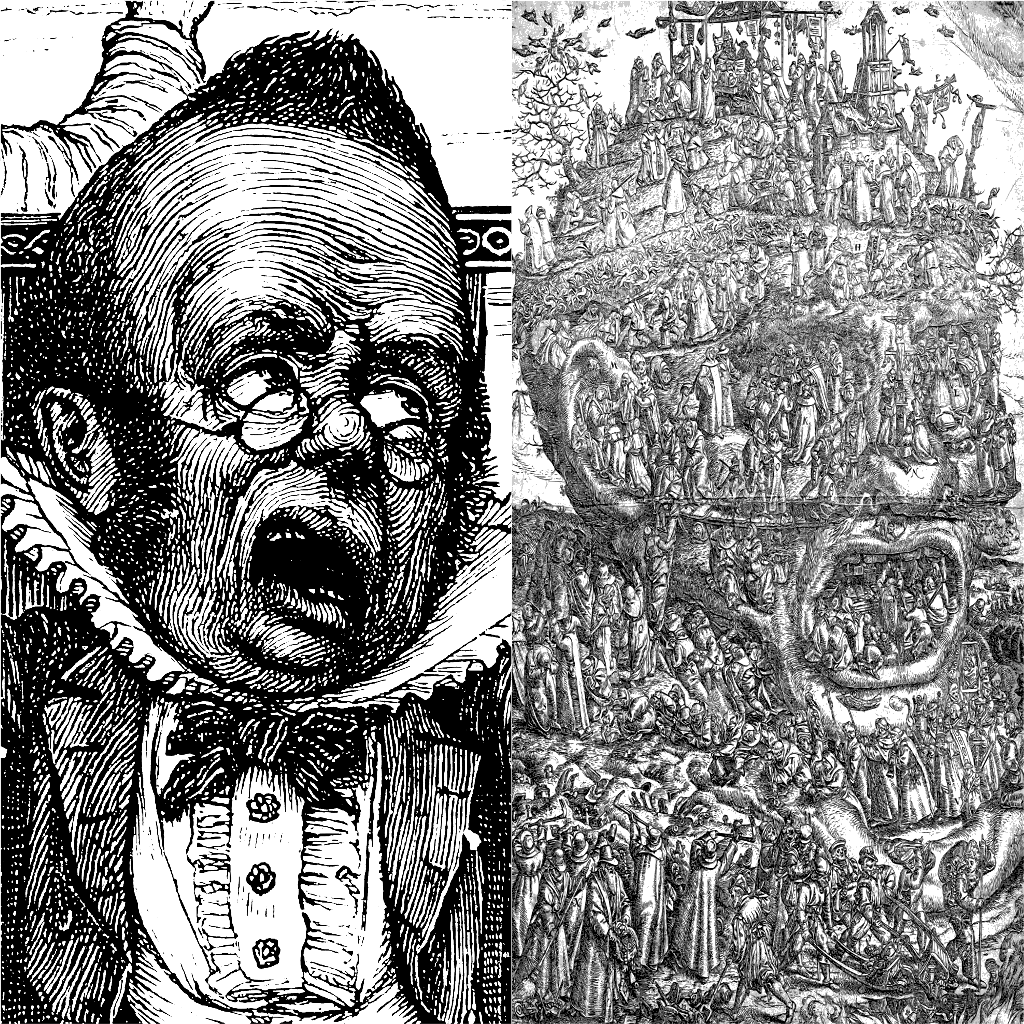

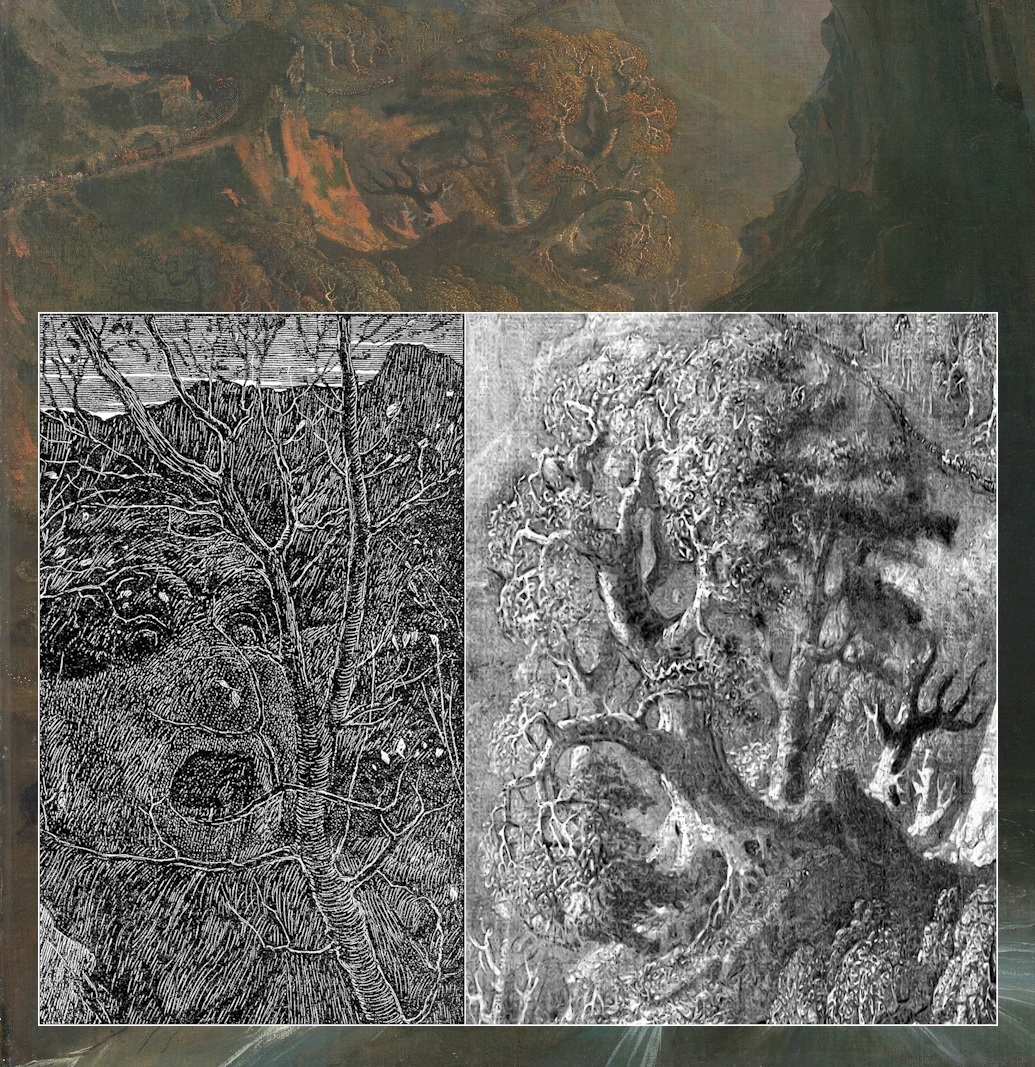
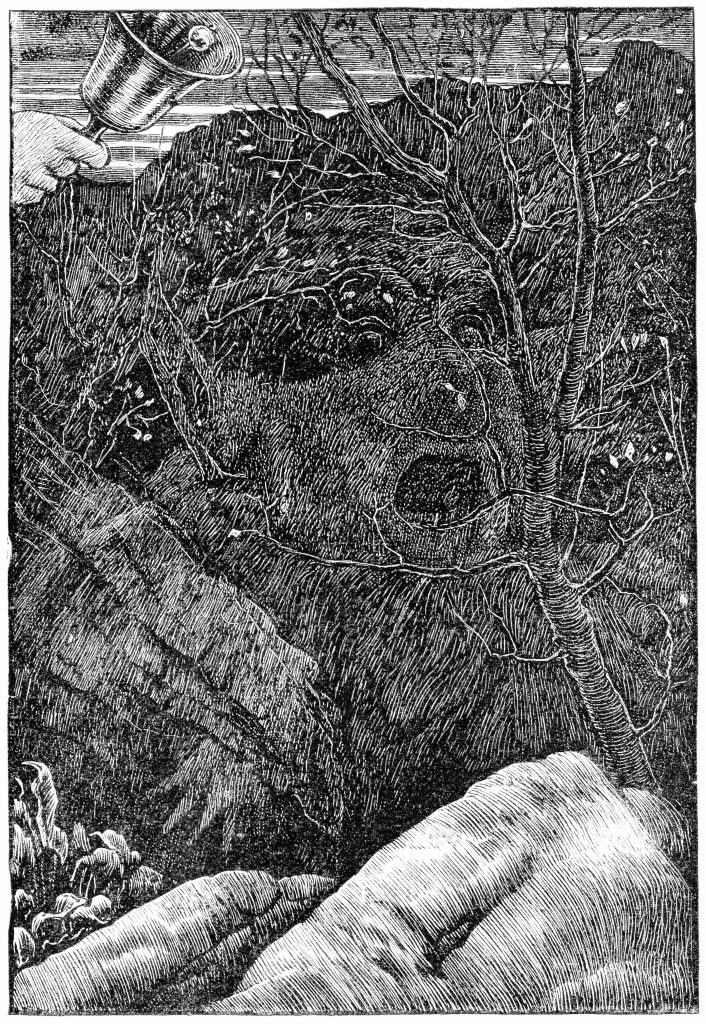 Usually elements
Usually elements 